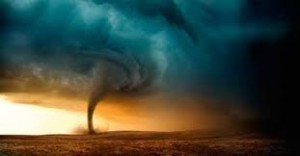 Natural disasters such as floods, storms, earthquake, hurricanes, blizzards and more can strike anywhere at any time. They can affect any kind of business. It is important that you be ready for such eventualities. Each kind of natural disaster has its own set of problems. You need to be prepared for situations which could directly affect your business. Your disaster plan should identify vulnerabilities and analyze the probable impacts of any disaster on physical and virtual aspects of your business. Here are some business safety tips for natural disasters which should be taken to reduce the adverse impact.
Natural disasters such as floods, storms, earthquake, hurricanes, blizzards and more can strike anywhere at any time. They can affect any kind of business. It is important that you be ready for such eventualities. Each kind of natural disaster has its own set of problems. You need to be prepared for situations which could directly affect your business. Your disaster plan should identify vulnerabilities and analyze the probable impacts of any disaster on physical and virtual aspects of your business. Here are some business safety tips for natural disasters which should be taken to reduce the adverse impact.
Planning and preparing for natural disasters
By creating a plan to deal with natural disasters you will be able to ensure the survival of your business.
-
Insurance coverage– Check your insurance to find out whether you’re covered for damages caused by natural disasters and also for business interruption.
-
Check safety equipment– Inspect and test your safety equipment regularly which should include fire extinguishers, alarm systems, emergency lighting and more.
-
Backup important data– Important paper documents should be kept in a fire resistant cabinet. It’s vital that you back up your electronic data on servers which are in a different and secure location.
-
Risk assessment– It’s a good idea to estimate your risks. This will help you to come up with a plan to tackle the problems you are most likely to encounter.
-
Comprehensive evacuation strategy– Create an evacuation plan with clearly marked routes and exits. Specify an outside location where everyone can meet so that you will know whether your staff is safely evacuated or not. It’s also important that the routes and exits are well lit and you have alternative routes and exits in case of any problems with the primary ones.
-
Customized emergency kit– You need to create an emergency kit with essential items such as a first aid kit, flashlights, battery powered radio, nonperishable food items and bottled water. This kit should be easily accessible at the time of need.
-
List down important contacts– Create a list of emergency contact numbers. This should include the utility companies, the contact person at the insurance company, your building owner and important clients and suppliers.
-
Assign responsibility to key members– As disasters are unpredictable, you need to designate an employee who will contact others to instruct them about the action to be taken in case of emergencies occurring outside of business hours. It’s important to keep the phone numbers on the list updated to reflect the current numbers. Also, store the list online as well as in a secure location.
-
Secure the backup plan-Your backup plan should be saved in multiple secure locations and easily accessible. Update the disaster plan regularly to reflect any changes in employee composition, telephone numbers and modifications to your building. Distribute the updated plan to the concerned people.
-
Thoroughly test the plan– You need to test your plan to see how effective it is. It’s a good idea to call everybody and brainstorm on how to improve it. A dry run is a good way to test whether the plan will work in a practical real life scenario.
-
Specialized training– Train your staff in first aid, evacuation and other safety procedures. Distribute individual checklist for different natural disasters. Preparation is key to dealing with emergency situations.
If you are prepared for natural disasters and take the effective and necessary steps, you will go a long way in mitigating business interruption and loss or damage of property and personnel.


